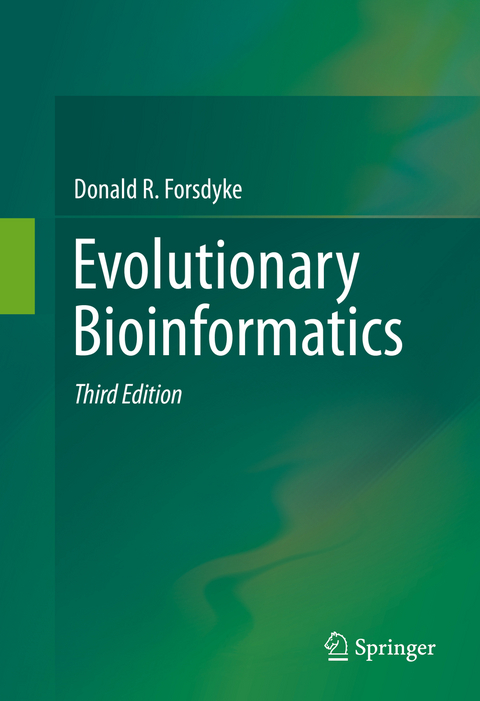
Evolutionary Bioinformatics
Springer International Publishing (Verlag)
978-3-319-28753-9 (ISBN)
Now in its third edition and supplemented with more online material, this book aims to make the "new" information-based (rather than gene-based) bioinformatics intelligible both to the "bio" people and the "info" people. Books on bioinformatics have traditionally served gene-hunters, and biologists who wish to construct family trees showing tidy lines of descent. While dealing extensively with the exciting topics of gene discovery and database-searching, such books have hardly considered genomes as information channels through which multiple forms and levels of information have passed through the generations. This "new bioinformatics" contrasts with the "old" gene-based bioinformatics that so preoccupies previous texts. Forms of information that we are familiar with (mental, textual) are related to forms with which we are less familiar (hereditary). The book extends a line of evolutionary thought that leads from the nineteenth century (Darwin, Butler, Romanes, Bateson), through the twentieth (Goldschmidt, White), and into the twenty first (the final works of the late Stephen Jay Gould). Long an area of controversy, diverging views may now be reconciled.
Donald Forsdyke graduated from St. Mary's Hospital, London University, UK in 1961. After house appointments at St.Mary's (Medical Unit and Department of Psychiatry) and the Addenbrooke's Hospital, Cambridge (Surgery), he began research in Molecular Biology and Cellular Immunology at the Department of Biochemistry, Cambridge (Ph.D. 1967). He was appointed to what was then the Department of Biochemistry at Queen's University in 1968. In 2013 he became President of the John Austin Society for the History of Medicine and Science.
Part 1. Information and DNA.- 1. Memory - A Phenomenon of Arrangement.- 2. Chargaff's First Parity Rule.- 3. Information Levels and Barriers.- Part 2. Parity and Non-Parity.- 4. Chargaff's Second Parity Rule.- 5. Stems and Loops.- 6. Chargaff's Cluster Rule.- Part 3. Variation and Speciation.- 7. Mutation.- 8. Species Survival and Arrival.- 9. The Weak Point.- 10. Chargaff's GC Rule.- 11. Homostability.- Part 4. Conflict within Genomes.- 12. Conflict Resolution.- 13. Exons and Introns.- 14. Complexity.- Part 5. Conflict between Genomes.- 15. Self/Not-Self?.- 16. The Crowded Cytosol.- Part 6. Sex and Error-Correction.- 17. Rebooting the Genome.- 18. The Fifth Letter.- Part 7. Information and Mind.- 19. Memory - What is Arranged and Where?.- 20.Certainty Now Uncertain.
| Erscheinungsdatum | 09.05.2016 |
|---|---|
| Zusatzinfo | XXXIV, 471 p. 116 illus., 24 illus. in color. |
| Verlagsort | Cham |
| Sprache | englisch |
| Maße | 155 x 235 mm |
| Themenwelt | Naturwissenschaften ► Biologie ► Evolution |
| Schlagworte | Biomedical and Life Sciences • DNA • Error-correction • evolutionary biology • Exons • Genomes • Human genetics • Information Channels • Introns • Mutation • Proteomics • Statistics for Life Sciences, Medicine, Health Sci • systems biology |
| ISBN-10 | 3-319-28753-2 / 3319287532 |
| ISBN-13 | 978-3-319-28753-9 / 9783319287539 |
| Zustand | Neuware |
| Informationen gemäß Produktsicherheitsverordnung (GPSR) | |
| Haben Sie eine Frage zum Produkt? |
aus dem Bereich


